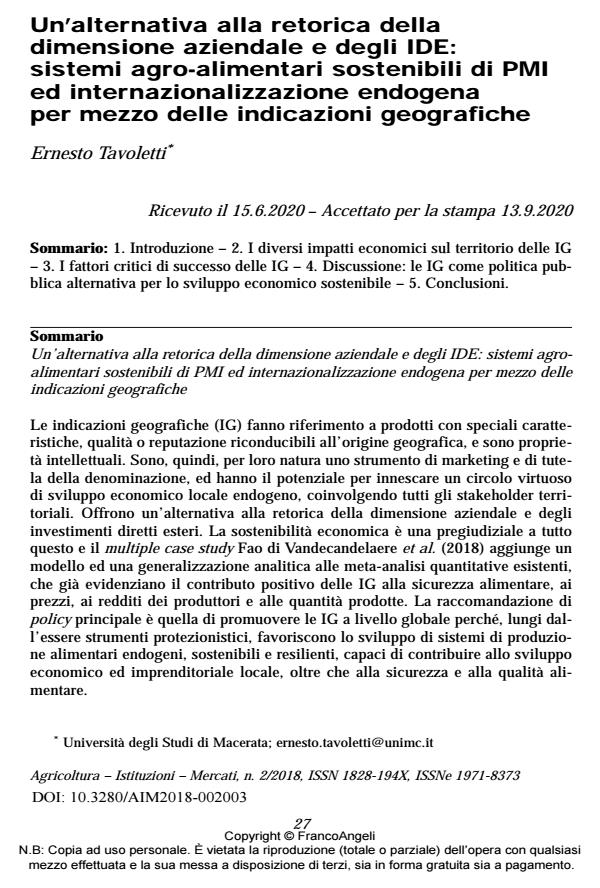An alternative to dimensional rhetoric and foreign direct investment: sustainable agro-food systems and endogenous internationalization by means of geographical indications
Journal title AGRICOLTURA ISTITUZIONI MERCATI
Author/s Ernesto Tavoletti
Publishing Year 2021 Issue 2018/2
Language Italian Pages 16 P. 27-42 File size 77 KB
DOI 10.3280/AIM2018-002003
DOI is like a bar code for intellectual property: to have more infomation
click here
Below, you can see the article first page
If you want to buy this article in PDF format, you can do it, following the instructions to buy download credits

FrancoAngeli is member of Publishers International Linking Association, Inc (PILA), a not-for-profit association which run the CrossRef service enabling links to and from online scholarly content.
Geographical indications (GI) refer to products with special characteristics, quality or reputation attributable to geographical origin, and are intellectual property. Therefore, by their nature, they are a marketing and protection tool for the denomination, and have the potential to trigger a virtuous circle of endogenous local economic development, involving all the local stakeholders. They offer an alternative to the rhetoric on SMEs being too small for the global markets, and foreign direct investment. Economic sustainability is a prejudice to all this and the FAO multiple case study by Vandecandelaere et al. (2018) adds a model and an analytical generalization to the existing quantitative meta-analyzes, which already highlight the positive contribution of GIs to food security, prices, incomes and quantities produced. The main policy recommendation is to promote GIs globally because, far from being protectionist tools, they favor the development of endogenous, sustainable and resilient food production systems, capable of contributing to local economic and entrepreneurial development, as well as safety and food quality.
Keywords: Geographical indications, sustainable agro-food systems, foreign direct investments, territorial resilience, endogenous growth, SMEs.
Ernesto Tavoletti, Un’alternativa alla retorica della dimensione aziendale e degli IDE: sistemi agro-alimentari sostenibili di PMI ed internazionalizzazione endogena per mezzo delle indicazioni geografiche in "AGRICOLTURA ISTITUZIONI MERCATI " 2/2018, pp 27-42, DOI: 10.3280/AIM2018-002003